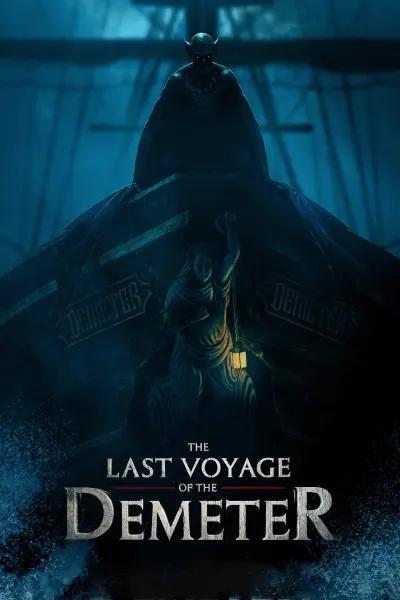
"The Last Voyage of the Demeter" stands as a compelling and atmospheric horror film, a creative reinterpretation of a segment from Bram Stoker's renowned novel, "Dracula". Under the direction of André Øvredal, a director celebrated for his contributions to the horror genre, this cinematic piece embarks on a chilling odyssey aboard the doomed merchant vessel, the Demeter. The narrative intricately chronicles the ship's voyage from Transylvania to London, unbeknownst to its crew, carrying the infamous vampire, Dracula.
Set against the backdrop of the late 19th century, the film begins as the Demeter sails with an enigmatic cargo: fifty wooden crates, secretly harboring Dracula. This incarnation of Dracula is presented as a formidable and cunning predator, deftly hunting the crew to sustain himself throughout the voyage. As his malevolent presence aboard the ship becomes increasingly evident, a palpable sense of horror envelops the narrative, transforming the vessel into a claustrophobic realm of nightmares.
The characterization in "The Last Voyage of the Demeter" is intricately crafted, enriching the film's horror narrative. Corey Hawkins plays Clemens, a doctor who boards the Demeter, while Aisling Franciosi portrays Anna, an unwitting stowaway and Dracula's captive. Their performances, along with the robust ensemble cast, significantly elevate the film's emotional intensity. The crew's fight for survival transcends physical confrontation, delving into a profound struggle against fear and despair.
Director Øvredal's approach is laudable for its keen focus on visual style and atmospheric tension. The suspenseful cat-and-mouse interplay between Dracula and the crew is masterfully executed, rendering a hauntingly beautiful yet eerie ambiance. The film adeptly sustains suspense and terror, maintaining an edge-of-the-seat experience despite the audience's foreknowledge of the characters' fates.
Furthermore, the film delves into deeper, more existential themes, such as the essence of evil and the human psyche's response to unfathomable horror. Dracula, portrayed by Javier Botet, emerges not merely as a monstrous entity but as a representation of the pervasive darkness in the unknown. The crew's diverse reactions to this sinister force range from disbelief and denial to acts of bravery and sacrifice, mirroring the multifaceted nature of humanity when confronted with a supernatural adversary.
The conclusion of "The Last Voyage of the Demeter" leaves the audience in a state of lingering terror. Clemens, the only survivor, arrives in London with a resolve to pursue and annihilate Dracula. This denouement establishes an atmosphere of ongoing horror and anticipation, hinting that the dreadful saga is far from concluded. The narrative, while self-contained, ingeniously integrates into the broader Dracula mythos, hinting at the potential for further exploration of this iconic vampire tale.
In summary, "The Last Voyage of the Demeter" is a sophisticated and expertly crafted horror film that breathes new life into the Dracula legend. Merging a compelling narrative with striking visual storytelling and robust performances, it stands as a significant addition to the horror film genre. This film offers a thrilling and foreboding experience for aficionados of horror and Dracula adaptations alike, remaining faithful to Stoker's original vision while presenting novel interpretations of the vampire mythology.

